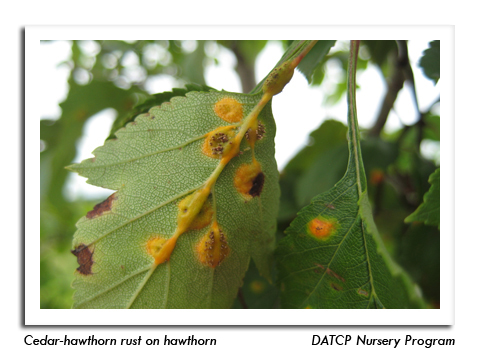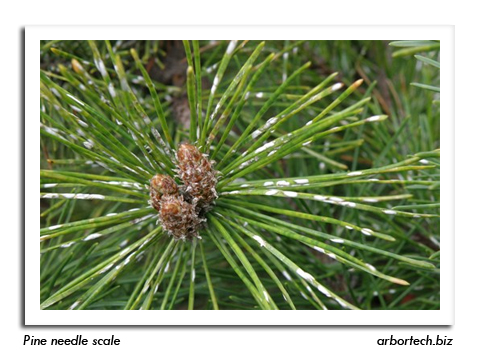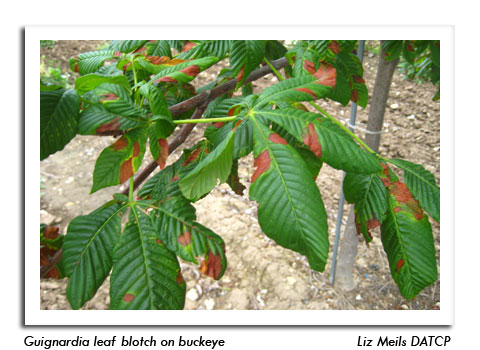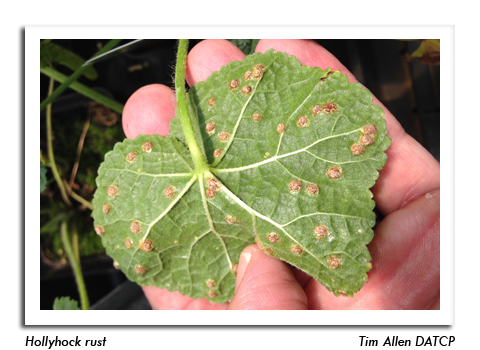
 |
|
|
Nursery & Forest
Volume 60 Number 11 Date 07/02/2015 CEDAR-HAWTHORN AND CEDAR-QUINCE RUST - Symptoms of these two rust diseases are apparent on hawthorns in Douglas, Dodge, Jefferson, Kenosha and St. Croix counties. The bright orange spots characteristic of cedar-hawthorn rust are noticeable on the leaves, whereas cedar-quince rust is infecting the fruits and twigs. Both rusts have a life cycle that requires a rosaceous host and a juniper host. Selecting resistant hawthorn cultivars and thorough sanitation, including removing infected twigs, fruit and leaves, are the recommended controls. Fungicide treatments applied as new growth appears and flower buds start to open may be necessitated in severe cases. PINE NEEDLE SCALE - Light infestations of this insect were found on Scots pine in Kenosha County. At low densities, pine needle scale causes little damage, but larger populations lead to needle discoloration and potentially branch death. Controls are most effective in spring when applied against the crawler stage shortly after egg hatch. This event corresponds with first bloom of common lilac, usually around early to mid-May. The proper timing of insecticidal treatments should be determined by monitoring infested pines for newly emerged crawlers. GUIGNARDIA LEAF BLOTCH - This leaf spot disease is developing on horse chestnut trees in Kenosha County. Symptoms include irregular, reddish-brown leaf lesions with yellow margins that distort affected foliage as they increase in size and severity. Disease development can be suppressed by disposing of fallen leaves in autumn to reduce inoculum levels. -- Liz Meils, DATCP Nursery Inspector GYPSY MOTH - Mating disruption treatments were completed by July 1 in Crawford, Richland, Trempealeau and Vernon counties and should resume next week in north-central Wisconsin. Planes are applying a non-toxic pheromone flake intended to reduce populations by disrupting moth mating. Phenology models indicate that pupation is occurring as far north as Eau Claire. No moths have been observed to date. Gypsy moth trapping is now about 90% complete, with 10,841 traps of the expected total of 12,002 traps set. -- Rick Hummell, DATCP Gypsy Moth Program FIR-FERN RUST - Balsam firs in Oneida County were infected with this disease, diagnosed by the presence of white fungal pustules on the underside of current-year needles. Fir-fern rust infects balsam, white and Frasier fir. Some rust species develop on and kill infected fir needles in one season, subsequently overwintering on an alternate fern host. Other species overwinter in living fir needles and twigs and kill the infected trees over the course of several seasons. Infected needles dry out and drop prematurely in quantities that can render trees unmarketable. Removing alternate fern hosts, particularly bracken ferns, from the field perimeter by mowing or applying herbicide sprays may reduce its incidence. HOLLYHOCK RUST - Nursery inspectors report that this rust disease is developing on hollyhocks in northern Wisconsin. Hollyhock rust is readily identified by yellowish splotches on the upper surface of leaves that correspond with rusty orange pustules on the leaf underside. Rust symptoms begin low on the plant and progress upward, worsening throughout summer and killing most foliage by early fall. Disease spread occurs by windborne spores, splashing water or infected transplants and is favored by warm, humid weather. The disease cycle can be broken by cutting stalks back to ground-level in fall and destroying all infected plant material. -- Tim Allen, DATCP Nursery Inspector 





|
|
|